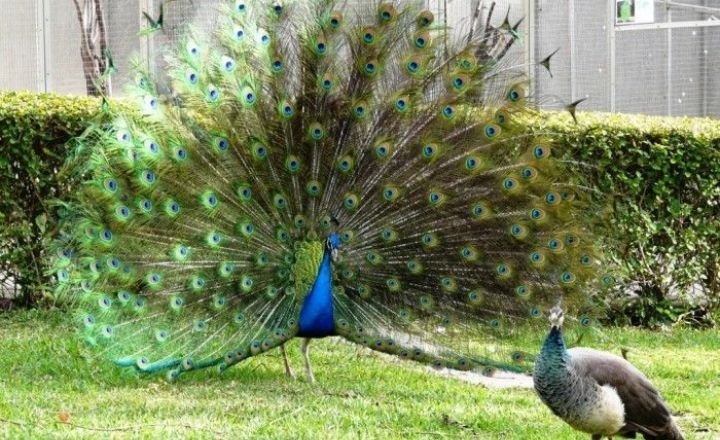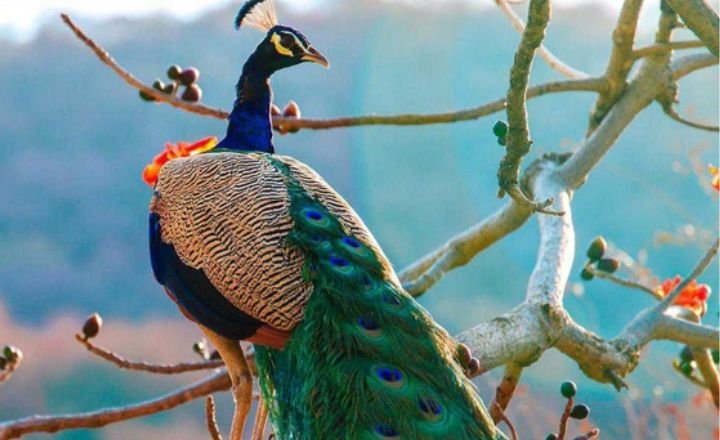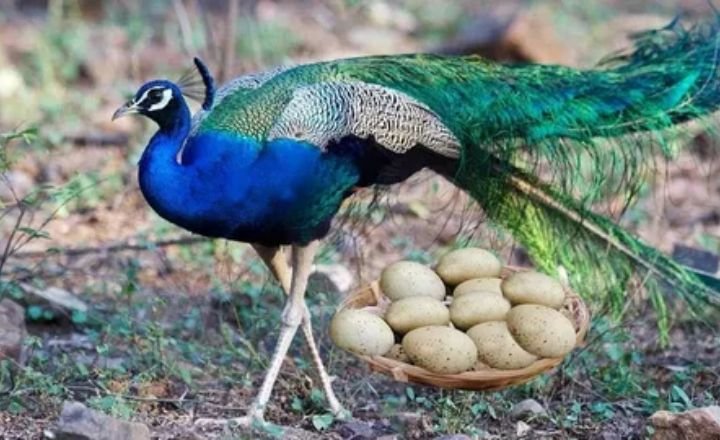During this critical period, typically from late winter to early summer, male peacocks unleash their full potential through flamboyant tail displays and captivating dances. Their extravagant plumage, a glorious display of iridescent blues and greens, captivates onlookers while signaling the breeding season’s grand event. When do peacocks breed?
This question opens a window into a fascinating world where beauty meets biology, revealing the reproduction timing and how these stunning birds engage in elaborate displays to attract mates. The stakes are high; successful reproduction depends on numerous factors, including environmental conditions, availability of resources, and social dynamics within their habitats.
The Peacock Breeding Season
The peacock breeding season, which typically unfolds during the vibrant months of spring and early summer, is an extraordinary spectacle characterized by a flurry of courtship displays and intricate rituals.
- As daylight hours extend and temperatures rise, these stunning birds become hyper-aware of their biological imperatives.
- The increase in sunlight not only stimulates hormonal changes but also signals the arrival of potential mates.
- During this period, males engage in elaborate displays, spreading their iridescent tail feathers to showcase their health and vitality.
- The duration of the breeding season can vary depending on the geographical location, but it generally spans from March through July.
- During this time, males will engage in frequent vocalizations known as calls, which resonate across their territories.
- Every sound serves not only to attract females but also to establish dominance over rivals within earshot.
Females are drawn to males displaying superior feather patterns or extravagant body language; thus, one could say that each colorful plume represents a narrative of survival—a showcase where beauty intertwines with evolutionary advantage in the pursuit of procreation.
Peacock Courtship Display
The peacock’s courtship display is a spectacle of nature that transcends mere mating rituals; it stands as a vivid declaration of vitality and health. Male peacocks, with their iridescent tail feathers, each adorned with striking eye-like patterns, fan out in an intricate dance that almost resembles the brushstrokes of an artist’s palette.

This display isn’t just for show; it serves as a vital communication tool between male and female birds, showcasing physical prowess and genetic fitness. They spread their feathers for female attention and intimidate predators.
When Do Peacocks Spread Their Feathers?
Peacocks spread their feathers during the breeding season, which typically peaks in the warmer months. Understanding when peacocks fan their vibrant tail feathers reveals the intricate timing of their courtship rituals and the evolutionary significance of these displays. Males often perform elaborate shows at dawn or dusk when light enhances the iridescence of their plumage, captivating potential mates with a dazzling array of colors and patterns.
Do Peacocks Mate Through The Eyes?
The idea that peacocks mate through their eyes is a myth steeped in misunderstanding, likely stemming from the striking beauty of their plumage. Male peacocks flaunt vibrant tails adorned with iridescent eyespots, or ocelli, which play a pivotal role in courtship display rather than engaging in some mystical eye-to-eye mating ritual.
These eyespots serve as visual spectacles and crucial signals to potential mates, demonstrating the male’s vitality and genetic fitness. The more elaborate and numerous the eyespots, the more attractive he is perceived by female peahens.

Research has revealed that the peacock’s tail serves more than just aesthetic purposes; it acts as an evolutionary signal, communicating vitality and reproductive viability. The more elaborate the tail, with its extensive array of eyespots, the more appealing it is to females. This elaborate display also reflects a balance between attracting mates and evading predators, a delicate dance where beauty signals strength in survival.
Peacock Mating Behavior: Do Peacocks Mate For Life?
The answer is a resounding NO. In the vivid world of peafowl, polygamy reigns supreme. Male peacocks, with their striking iridescent tails and extravagant displays, do not seek lifelong partners; instead, they engage in a captivating display of dominance and competition to attract multiple females during the breeding season.
Peacock Egg Laying Process
After a successful mating season, peahens embark on a fascinating journey of preparation for laying their eggs, showcasing instinctual behaviors that highlight their strong maternal instincts. Peahens seek out secluded areas to create a safe nesting environment, often selecting dense vegetation or hidden spots to shield their precious future offspring from potential threats.
When Do Peacocks Lay Eggs?
Peacocks, known for their stunning plumage, are part of a fascinating reproductive cycle that captivates many wildlife enthusiasts. The timing of when peahens lay eggs typically aligns with the onset of spring, as these birds respond to increasing daylight and warmer temperatures. This period often spans from March to June in temperate climates, although variations can occur based on geographic location. A female may produce 6 to 12 eggs per clutch during this time.
Do Peahens Lay Eggs Without A Mate?
Peahens can indeed lay eggs without the presence of a male, leading to fascinating insights into their reproductive behaviour. Like many birds, female peafowl have the biological capability to produce and lay eggs regardless of mating status; however, these eggs will be infertile if no male is involved. This intriguing aspect highlights how nature equips females with the means to continue the reproduction cycle even in solitary conditions.
Peacock Egg Laying Patterns
Peahens, the female counterparts of the majestic peacock, exhibit fascinating egg-laying patterns that spark curiosity about their reproductive behaviours. A peahen lays between 3 to 8 eggs per breeding season, often in secluded nests built on the ground or amongst tall grass.
How Many Eggs Do Peacocks Lay?
Peacocks, often celebrated for their striking plumage and regal demeanor, belong to the Indian peafowl. When it comes to reproduction, these magnificent birds have some intriguing characteristics. A typical clutch of peafowl eggs usually contains between 3 and 12 eggs, with the average hovering around six. This relatively modest number reflects a fascinating balance in their reproductive strategy. This adaptation allows the mother to invest ample care into raising her young without being overwhelmed by too many offspring.
How Many Eggs Does A Peacock Lay Per Day?
Peahens, the female counterparts of the majestic peacock, typically lay an average of 4 to 6 eggs during their laying season, which spans from spring to early summer. Unlike more prolific layers like chickens, peahens do not produce eggs daily; instead, they usually lay one egg every other day or even every few days.
How Many Eggs Does A Peacock Lay In A Year?
Peacocks, the magnificent tail-feathered males of the peafowl species, are often overshadowed by their captivating plumage when discussing reproduction. The peahen, the female counterpart, lays eggs. A peahen can produce between 4 to 6 eggs during a single breeding season, from late spring to early summer. This seasonal output signifies that her total annual egg production is modest compared to other birds.
Ensuring Successful Breeding and Egg Production
The ideal environment for peacocks and peahens during the breeding season is essential to ensure successful mating and egg production. A spacious aviary with varied terrain encourages natural behaviours; incorporating shrubs, tall grasses, and even minor water features can create a secluded place for the birds to court and nest.

Optimizing light exposure mimics natural seasonal cues: longer daylight hours stimulate hormonal responses that can enhance fertility. Supporting health during this critical period is equally paramount. A balanced diet rich in protein from seeds, grains, fresh fruits, and vegetables fuels their energy levels while ensuring proper nutrition for egg development.
Providing supplements like calcium can support more robust eggshell formation. Regular health checks are vital; stress management techniques such as gentle handling will help maintain a calm atmosphere conducive to reproduction. Maintaining these conditions fosters thriving peafowl and ensures a vibrant continuation of their lineage through healthy offspring.
What Triggers Peacock Mating Season?
Climate and Weather Conditions
The main reason peacocks start breeding is actually climate change. When temperatures rise and rain becomes more common, the males really kick into gear, showing off their beautiful feathers.
Longer Daylight Hours
Peacocks are fascinating creatures that breed based on the amount of daylight they receive. As spring and summer roll in with longer days, their bodies get the signal that it’s time to find a mate.
Hormonal Changes
During this time, the increase in testosterone levels among male peacocks plays a big role in their vibrant courtship displays and vocalizations.
Peacock Courtship Behavior – How They Attract Mates
The breeding season is when male peacocks truly shine. Their stunning tail, known as the train, is key to catching the eye of potential mates
The Famous Feather Display
Male peacocks fan out their shimmering tail feathers and give them a gentle shake, creating a rustling sound that draws the attention of females.
Vocal Calls
During mating season, peacocks let out loud, haunting calls that can be heard from over a kilometer away. These calls act as both a way to mark their territory and signal their availability for mating.
Dancing & Posture
Besides feather displays, peacocks engage in dancing, circling the female while making subtle movements, adding rhythm to their courtship.
How Long Is the Peacock Breeding Season?
The mating season typically spans about 4 to 5 months. During this period, male peacocks engage with several females, as they are naturally polygamous.
What Happens After Mating?
Nesting
The female peahen, after mating, builds a shallow nest on the ground, usually hidden among bushes or tall grass.
Egg Laying and Incubation
She lays 3 to 8 eggs and incubates them for around 28 days. Males do not take part in raising the young.
Raising Peachicks
Peachicks (baby peafowls) are born fully feathered and capable of short flights within days. They stay with their mother for several months.
Do Peacocks Breed in Captivity?
Absolutely! Peacocks can breed quite successfully in places like zoos, farms, and even backyard aviaries, as long as their environmental needs are taken care of.
- To ensure a thriving breeding season in captivity, it’s important to provide:
- Enough space to roam
- Proper lighting that mimics the natural length of the day
- A diet that’s rich in protein and calcium
- Access to shade and some privacy
With these essentials in place, you can create a healthy environment for peacocks to breed.
Regional Breeding Differences (USA, UK, India)
- In India: the breeding season runs from April to September, which aligns with the monsoon.
- USA: it’s typically from May to August due to the warmer climate.
- UK: where it’s colder, peacock breeding happens from June to early September, but it’s a bit shorter and often delayed.
If you’re raising peacocks in areas that aren’t tropical, think about using artificial lighting and temperature control to replicate the natural cues for breeding.
Interesting Facts About Peacock Breeding
- Did you know that a peacock’s tail can stretch to an impressive 60% of its body length? It’s primarily used to attract potential mates.
- When it comes to choosing a partner, peahens look for tail symmetry, those beautiful eye spots, and how the peacock moves.
- And get this: the louder and longer a peacock’s call, the more dominant it is perceived to be.
- Interestingly, peacocks don’t keep their stunning train all year round; it actually sheds after the breeding season.
Conclusion
The peacock breeding season is a fascinating time marked by elaborate courtship displays and careful egg-laying processes. When Do Peacocks Breed? Understanding their breeding cycle, which typically peaks during the warmer months, allows breeders and enthusiasts to better prepare for successful mating and chick rearing.
Environmental factors such as temperature, humidity, and habitat quality are crucial in ensuring optimal conditions for peafowl reproduction. By closely monitoring these elements, breeders can enhance their chances of fostering healthy offspring.
FAQs
What is the mating ritual of a peacock?
The most iconic element of this ritual is the fan-like display of their magnificent tail feathers, known as a train.
Does a peacock lay eggs without mating?
The mating process involves courtship displays by the peacock, which showcases its vibrant plumage to attract a mate.
